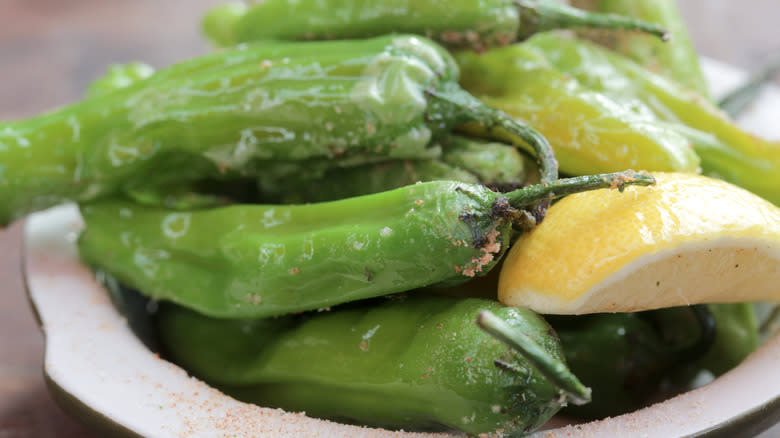Why Gordon Ramsay Reaches For A Fresh Lemon After Dicing Hot Peppers

With numerous award-winning restaurants and even more cooking shows that share countless clever tips for home chefs, Gordon Ramsey is one of the most prolific celebrity chefs and restaurateurs. In an episode of "Gordon Ramsay: Cookalong Live." he demonstrated a clever method for deseeding and cutting hot chili peppers. While his method is quick and painless, Ramsey affirms that your hands will still touch the parts of the pepper flesh that contain the spicy, burning chemical capsaicin. He, therefore, recommends squeezing fresh lemon juice over your hands after you've finished cutting the peppers.
Lemon juice is key to neutralizing capsaicin, which effectively prevents it from burning your fingers or any other part of your body your fingers come in contact with. The reason it's a good neutralizer lies in the science of acids and bases, or pH. Lemon juice is highly acidic with a low pH, while capsaicin has a higher pH. So, adding lemon juice to the capsaicin left on your hands after dicing peppers will bring the pH to a more neutral position.
Lemon juice, lime juice, and vinegar are all common acids used to negate the heat of peppers in common recipes, from different types of salsas to marinades. In fact, soaking chili peppers in a vinegar solution is known as desflemar and is a longstanding practice in Mexico, where chili peppers originated and are key ingredients in countless dishes.
Read more: Vinegar Cooking Hacks You'll Wish You Knew Sooner
Other Unconventional Tips For Cutting Peppers

Using lemon juice to rid your fingers of hot pepper remnants isn't the only trick Ramsey has up his sleeve. He also demonstrated an unconventional tip for deseeding chili peppers without using utensils to scrape them out. He starts by placing the whole chili between his palms and rubbing them together, creating friction and vigorously twisting the chili to loosen the seeds, followed by a couple of taps against his cutting surface. Then, he chops off the top of the chili, turns it upside down, and lightly shakes it to release all the seeds. Lastly, he cuts off the tip, turns the pepper right side up, and shakes out any remaining seeds. This is a clever hack that allows you to handle a chili pepper without risking burns from the fleshy interior.
His tip for cutting a bell pepper is even more ingenious. While bell peppers don't have sufficient capsaicin to pose a danger to your hands, his method for deseeding the bell pepper is highly efficient and mess-free. He starts by removing the bell pepper's stem with a quick chop, then places the pepper stem side down on its newly flat topside. He then cuts the pepper from the top, slicing it downward around the seeded center in fat strips. The seeds and piths remain intact and attached to the green stalk, so they don't end up all over your cutting board.
Read the original article on Tasting Table
